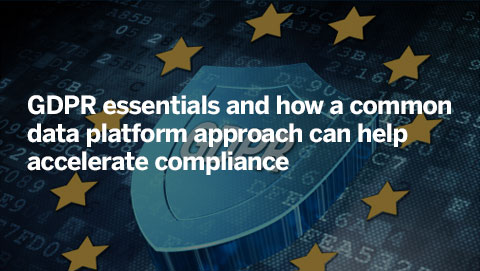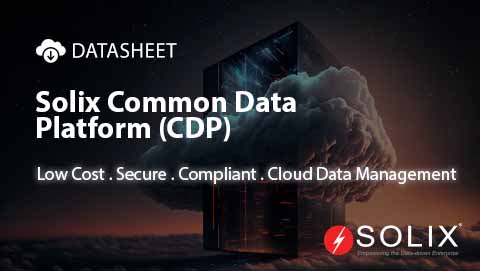Static Data Masking
What is Static Data Masking?
Static Data Masking, or Persistent Data Masking, is a masking technique operating on the irreversible data transformation principle. It ensures that confidential data elements are permanently replaced with fictitious yet structurally identical counterparts. However, in some specific cases, with additional information or context, it might be possible to partially reconstruct the original data, especially if weak masking techniques are used.
How Static Data Masking Works?
- Identification of Sensitive Data Elements: The first step is identifying the specific data elements containing sensitive information. This often includes personally identifiable information (PII), financial details, and other confidential data critical to an organization.
- Data Profiling and Analysis: Data profiling tools analyze and understand the characteristics, structure, content, consistency, trends, anomalies, and relationships between the identified sensitive data elements.
- Masking Rule Definition: Masking rules are established based on the insights gained from data profiling. These rules dictate how the sensitive data will be transformed.
- Data Transformation: The actual data transformation occurs in this stage, where the different data masking techniques are executed on the identified sensitive data. Depending on the technique used, the masking can be reversible or irreversible.
- Validation and Quality Assurance: Rigorous validation processes are then implemented to ensure that the masked dataset mirrors the original, preserving usability for analysis while protecting privacy.
- Deployment to Environments: Once validated, the masked dataset is deployed in different environments, ensuring the teams working in these environments can utilize authentic yet privacy-compliant data without the risk of exposing sensitive information.

A general representation of how Static Data Masking Works
Difference between Static and Dynamic Data Masking:
Static masking permanently replaces sensitive information with masked values in a database, while dynamic masking dynamically masks information in real-time based on user permissions, ensuring sensitive information remains hidden from unauthorized users without altering the underlying data.
| Feature | Static Data Masking | Dynamic Data Masking | On-the-Fly Masking |
|---|---|---|---|
| Timing | Before data storage | During data access (real-time) | During data access (real-time) |
| Masking Rules | Pre-defined | Based on user permissions | Based on specific situations |
| Data Type | More efficient for structured data | Efficient for structured and unstructured data | Efficient for structured and unstructured data |
| Advantages | Simple, Efficient | Granular control, Real-time access | Real-time, Context-aware |
| Disadvantages | Not real-time, Inflexible | More complex, Performance impact | More complex, Performance impact |
Applicability of Masking Techniques Across SDM and DDM:
| Technique | Static Data Masking | Dynamic Data Masking | On-the-Fly Masking |
|---|---|---|---|
| Shuffling | Yes | Yes | Yes |
| Redaction | Yes | Yes | Yes |
| Tokenization | Yes | Yes | Yes |
| FPE | Yes | Can be used | Can be used |
| Substitution | Yes | Yes, with user-based variations | Yes, with user-based variations |
| Encryption | Possible (if real-time access is not needed) | Less Ideal (performance overhead) | Less Ideal (performance overhead) |
| Nulling | Simple, but minimal protection | Can be used for limited masking | Can be used for limited masking |
| Noice addition | Can be used along with other technique | Can be used along with other technique | Can be used along with other technique |
Benefits:
- Enhanced Security and Privacy: Static masking provides a robust layer of protection that ensures compliance with data privacy regulations like GDPR, PCI DSS, HIPAA, LGPD, etc, by rendering sensitive information unreadable and useless to unauthorized individuals.
- Mitigation of Internal and External Threats: It is a potent deterrent against internal and external threats by thwarting access to the unauthorized and helps reduce the risk of adversary activities within the organization.
- Maintain Data Utility: It preserves the dataset’s utility for testing, development, and analytics, making it essential for non-production environments. This allows organizations to validate applications securely without compromising data privacy.
Use Cases:
Static Data Masking has various use cases across different industries and scenarios where there’s a need to protect sensitive data while maintaining its utility. Some common use cases include:
- Non-Production Environment: Static masking allows organizations to replace sensitive data in non-production environments with fictitious or anonymized equivalents, enabling developers and testers to work with realistic datasets without compromising privacy.
- Outsourcing and Offshoring: Static masking allows organizations to share datasets with external partners while protecting sensitive information. With stringent data privacy regulations, this is crucial for the finance, healthcare, and legal services industries.
- Analytics and Business Intelligence: It enables organizations to share masked datasets with analysts and BI teams, ensuring that confidential information such as customer identities or financial details remains secure while allowing for meaningful analysis.
- Training and Education: By masking sensitive information such as personal identifiers, educators can ensure compliance with data privacy regulations while providing valuable learning experiences with authentic data.
- Software Demonstrations and Sales Presentations: Static masking allows organizations to anonymize or mask sensitive information in demonstration datasets, ensuring client privacy while demonstrating their products’ capabilities and functionalities.
In conclusion, as the landscape of data security and privacy evolves rapidly, Static Data Masking emerges as a pivotal strategy for organizations seeking robust protection against unauthorized access, data breaches, and compliance challenges. It ensures a formidable defense by permanently transforming sensitive information within non-production environments, allowing enterprises to navigate the intricate web of regulatory requirements, internal threats, and external vulnerabilities.
FAQ:
What distinguishes Static Data Masking from other data protection methods?
SDM permanently replaces sensitive data with fictitious but realistic values, ensuring data confidentiality without altering the original dataset. Unlike dynamic masking, it applies consistent transformations regardless of user access.
Can Static Data Masking be applied to unstructured data formats like documents or images?
SDM is primarily designed for structured data formats like databases, making it less suitable for unstructured data like documents or images. Organizations may need alternative techniques like redaction or encryption to protect unstructured data.
What role does tokenization play in Static Data Masking?
Tokenization complements SDM by replacing sensitive data with unique tokens while preserving data format and structure. This hybrid approach enhances security and privacy, particularly when reversible masking is required for specific use cases.
Can Static Data Masking be applied to streaming or real-time data environments?
SDM is typically applied to batch processing environments with static or non-changing data. It may not be suitable for streaming or real-time data environments due to its irreversible nature and potential latency implications.





